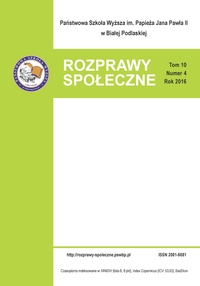Język esperanto w rozwoju turystyki kulturowej
Esperanto in the development of cultural tourism
Author(s): Dorota MączkaSubject(s): Language and Literature Studies, Tourism
Published by: Państwowa Szkoła Wyższa im. Papieża Jana Pawła II w Białej Podlaskiej
Keywords: tourism; cultural tourism; Esperanto; congress; cultural heritage
Summary/Abstract: Esperanto is a neutral international language which does not belong to any nation or country. Thus, it plays the role of a language that links cultures around the world making communication among people possible without discrimination since none of the speakers has a cultural advantage in the language knowledge. Esperanto tourism belongs to cultural tourism and indirectly to education, understood as a journey focused on broadening participants’ knowledge in a particular field or topic. The lovers of the language can travel to the global and local congresses, meetings for different interest groups and individually to befriended persons. Knowing the language, one can take advantage of various forms of tourism - mainly cultural one, but also hiking, mountain climbing, cycling and canoeing. First of all, this is a language of communication. The purpose of this article is a brief presentation of the idea of Esperanto and its use in cultural tourism. Contrary to appearances, Esperanto is used by many people in the world (as estimated, from tens of thousands to several millions). It facilitates interpersonal communication and group and individual tourism, both domestic and foreign. Apart from a few articles promoting the language, Esperanto publications on tourism are very rare. This article was written basing on the few existing ones and websites in Esperanto. The author of this article is an Esperantist (language level - B2).
Journal: Rozprawy Społeczne
- Issue Year: 10/2016
- Issue No: 4
- Page Range: 25-30
- Page Count: 6
- Language: Polish

